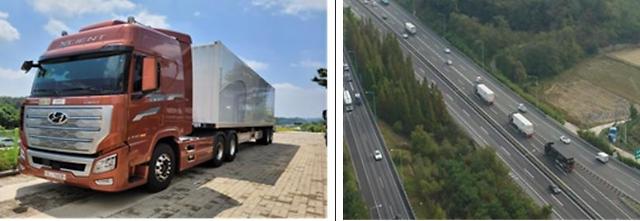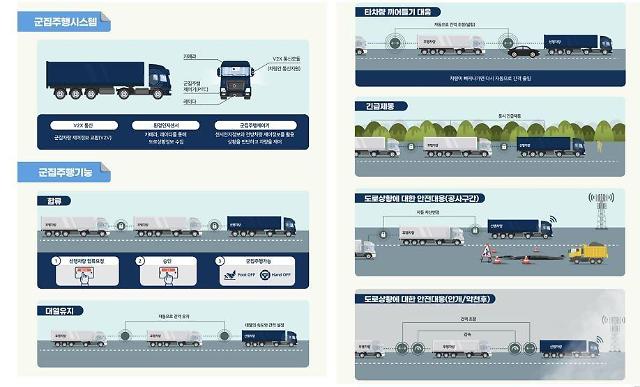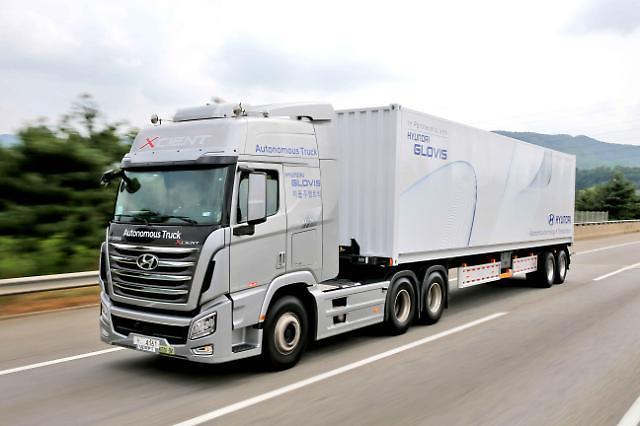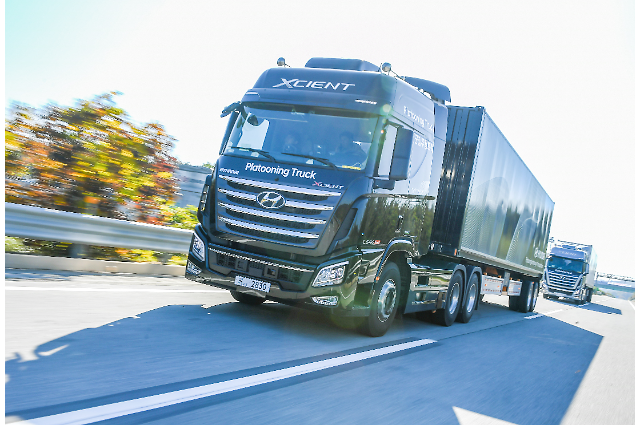
[Courtesy of the Ministry of Land, Infrastructure and Transport]
In the logistics industry, attention has been paid to crowd or cluster driving for large trucks that follow the moving range of a leading vehicle to increase stability. If commercialized, truck platooning will reduce driver fatigue, accidents caused by drowsy driving, fuel consumption and carbon dioxide emissions as vehicles drive close to each other to significantly reduce air-drag friction, the Ministry of Land, Infrastructure and Transport said in a statement on September 8.
.
"We will establish a systematic foundation so that cluster driving technology can be recognized as a universal service," Kim Jung-hee, a ministry official in charge of automotive policy, was quoted as saying. "We will support technology development so that services such as self-driving shuttle, taxi and delivery services can be commercialized as soon as possible."
Truck platooning was demonstrated on an eight-kilometer (4.97-mile) road in November 2020 as part of a state project to stimulate the development of autonomous vehicle technology for trucks and buses and platoon driving technology based on vehicle to everything (V2X) technology that uses mobile networks to connect vehicles to traffic lights and moving vehicles.
In the 2020 test, three Hyundai Xcient heavy-duty trucks moved at a speed of up to 80 km per hour while communicating with each other and maintaining a distance of 15.6 meters from one another. Emergency stops were performed using virtual obstacles disguised as wild animals.
For this year's demonstration on September 9, four trucks installed with radars, cameras, V2X systems, controllers, GPS and human-machine interface devices would be deployed, moving at a speed of up to 90 km per hour on an 80km section of expressways while maintaining a distance of 12.5m. More advanced technologies than the 2020 test will be demonstrated, the ministry said.
The platooning mode activates lane-keeping technology, allowing the following truck's driver to take hands off the steering wheel. If other vehicles cut between the platooning trucks, the following truck automatically extends the gap. When a leading truck makes an emergency stop, the following truck using a newly introduced technology responds quickly to decelerate and stop. By displaying videos from the leading vehicle, the following driver can see the road ahead.
In November 2019, the Hyundai auto group carried out the successful platooning of two 40-ton trailer trucks on a smart highway replicating real-world traffic conditions. The demonstration displayed platooning, cut-in and out by other vehicles, simultaneous emergency braking, and vehicle to vehicle (V2V) communication. A V2V system showed how real-time information shared by the two trucks can improve control over acceleration and deceleration, and incorporate information from various sensors.
Hyundai's Xcient truck has already displayed a level-3 autonomous driving system. Level 3 provides self-driving features such as lane-keeping assistant and highway driving assistant technology. Level 4 requires no input from a driver if there is no dangerous situation. Because large trucks with trailers require a more advanced and precise autonomous drive control system than passenger cars, Hyundai Motor has used differentiated precision sensing, judgment and control technologies.
Copyright ⓒ Aju Press All rights reserved.




View more comments